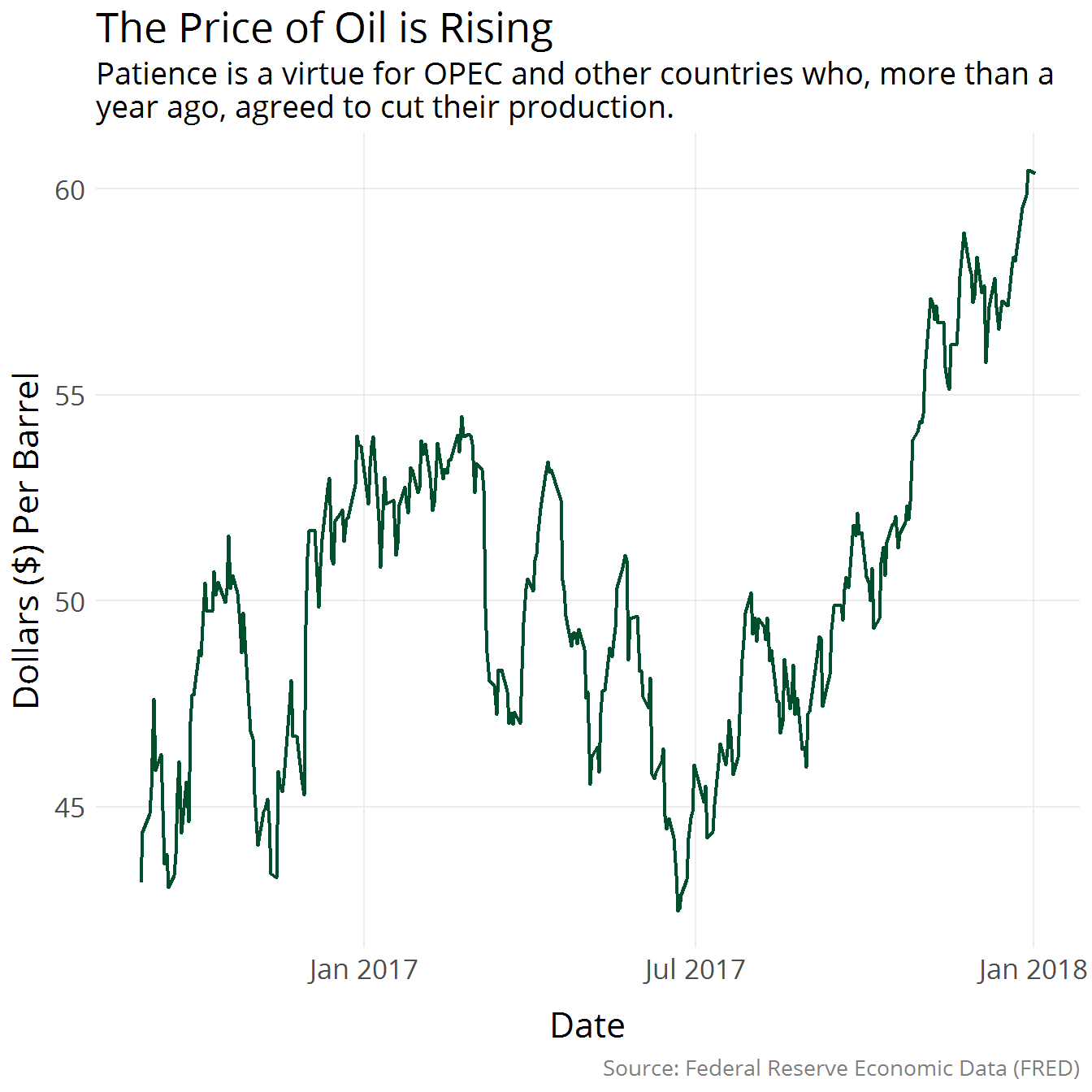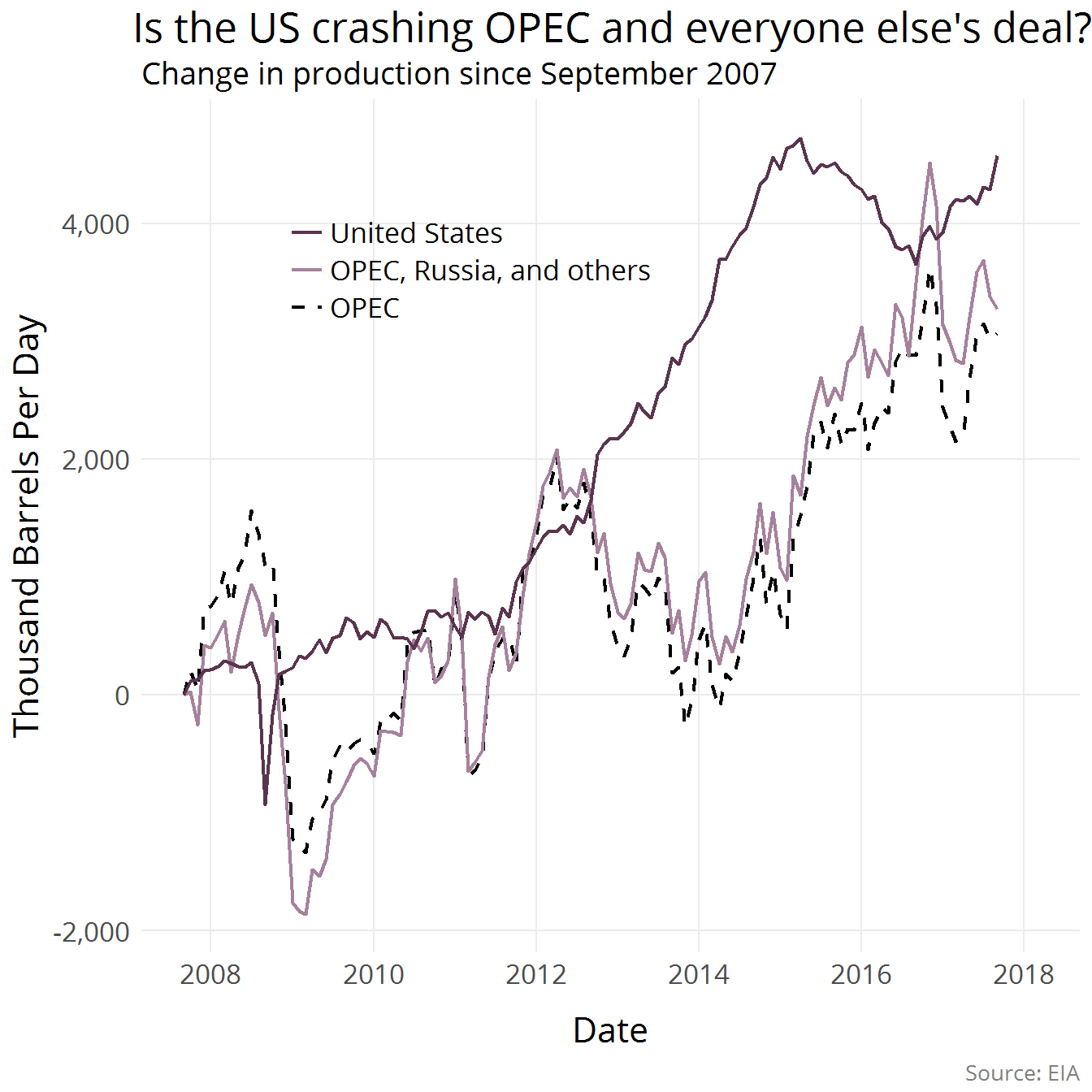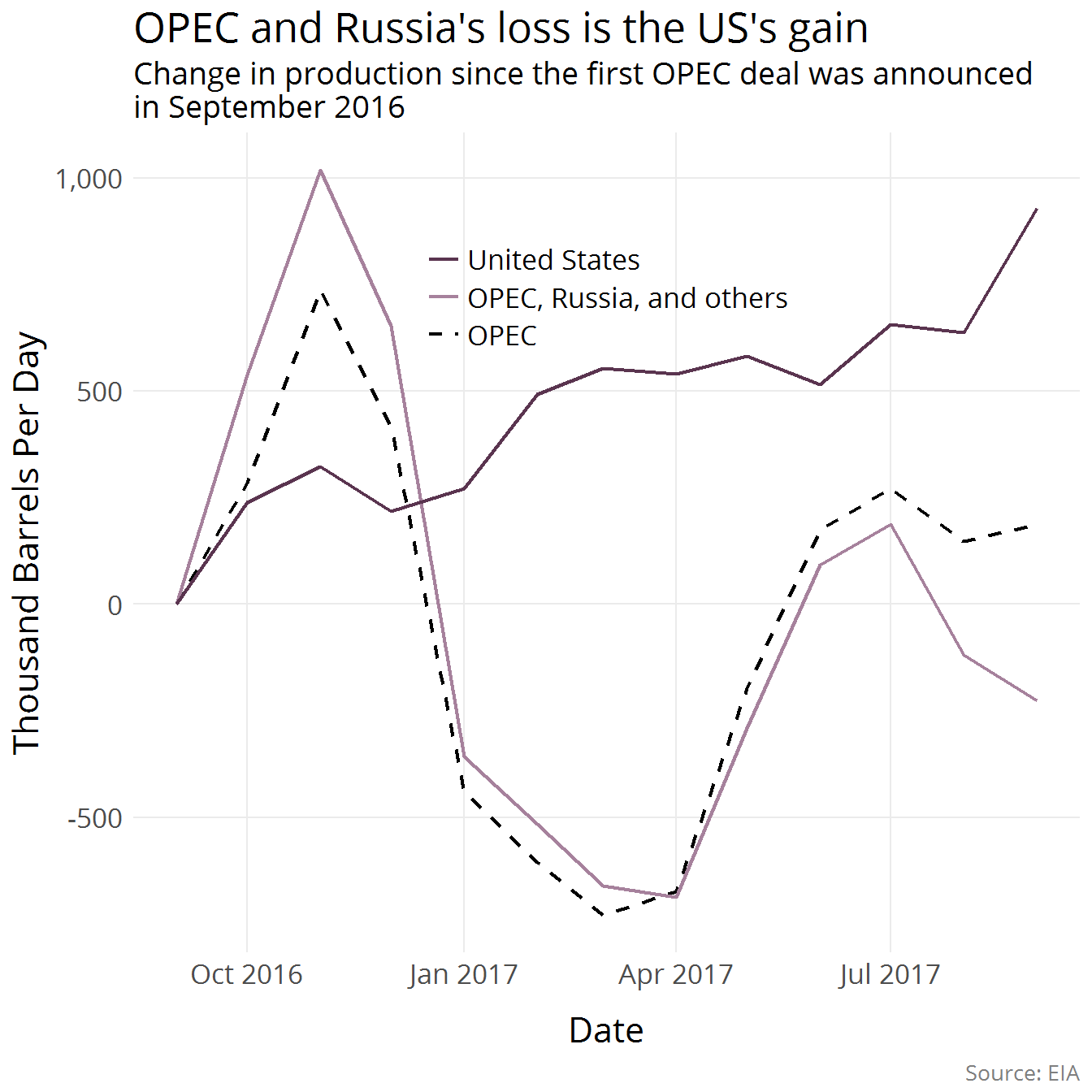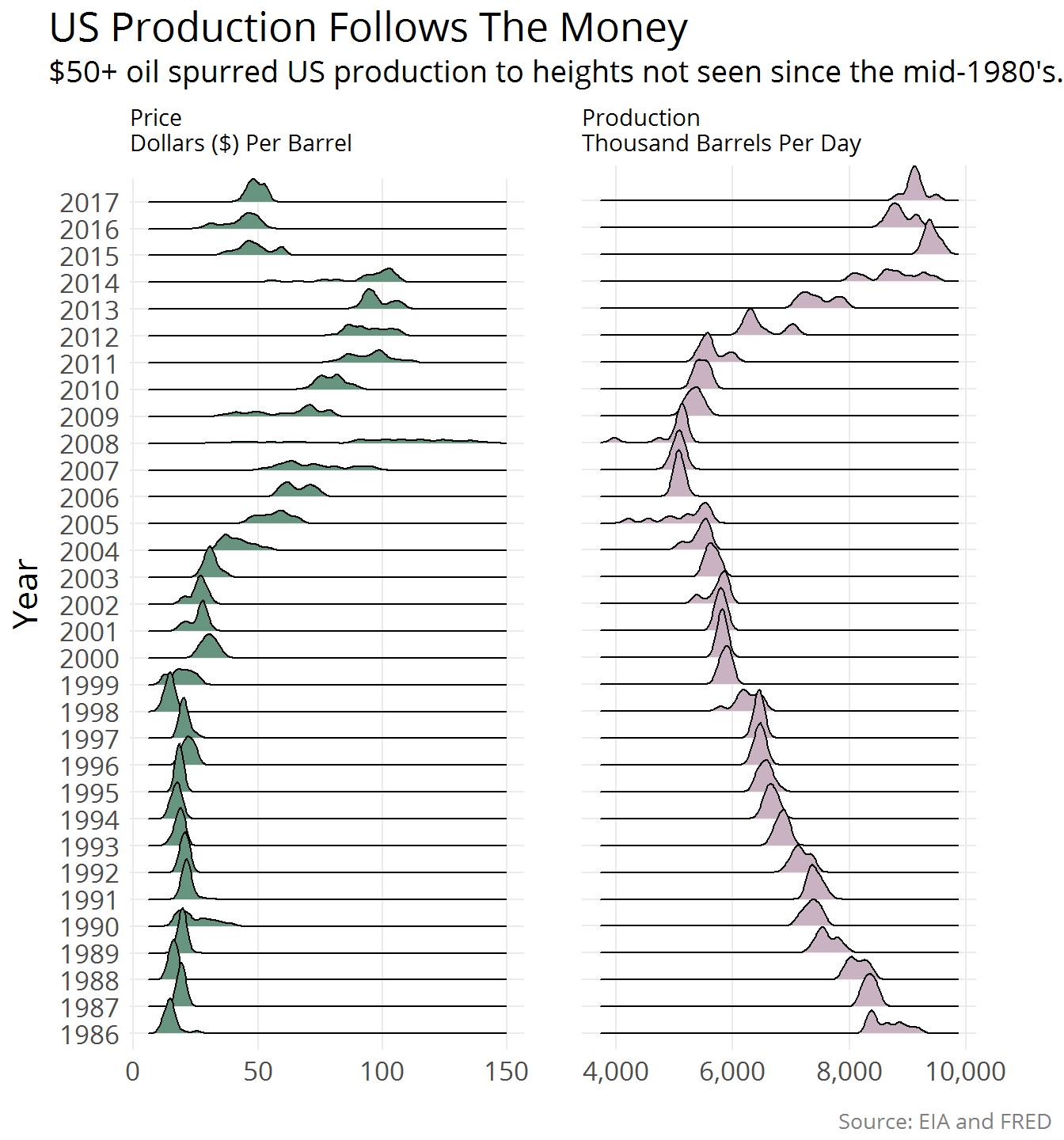In September 2016, OPEC announced it’s first production cut in 8 years.
Three months later, Russia, Mexico, Kazakhstan, and Oman announced they would agree in principle to OPEC’s decission and cut their own production.
The cuts have been effective: the December 2017 average price for a barrel of oil was $58. That’s the highest December average since 2014.

With the increase in price comes the incentive to increase production.
Companies within United States may have the most to gain, and they may have the most proven swing producer record, outside of OPEC nations.
According to the most recent data from the US Energy Information Administration (EIA), up to September 2017, the US added nearly 4.6 million barrels per day (bpd) of production from September 2007 to September 2017.

The addition by the US since September 2007 is 1.3 million bpd more than the change in production among OPEC, Russia, Mexico, Kazakhstan, and Oman - combined.
Since the OPEC production cut was first announced in September 2016, the US has added 928,000 bpd while OPEC and other countries have lost 226,000 bpd - a difference of nearly 1.2 million barrels between the two.

Whether US production will continue to climb rests solely on whether OPEC and other nations hold to their agreed-upon output levels - providing US producers room to increase their own production.
Barring any deviation from their agreed upon production cuts, OPEC and other nations will watch as US production fills in the void during 2018.

EDITED on 2018-01-09 to correct charts and in-line data about OPEC and other countries production from September 2007 to September 2017. The earlier reported 1 million bpd gap between the US and those countries is actually larger, at 1.3 million bpd.